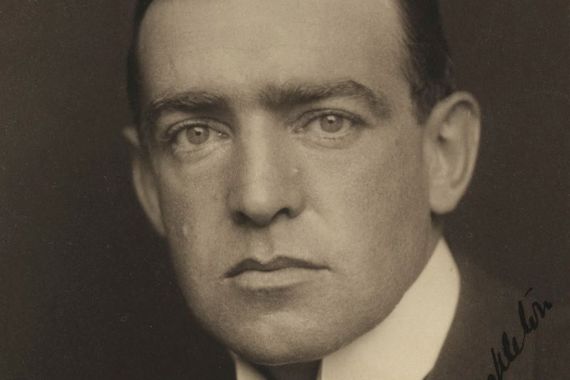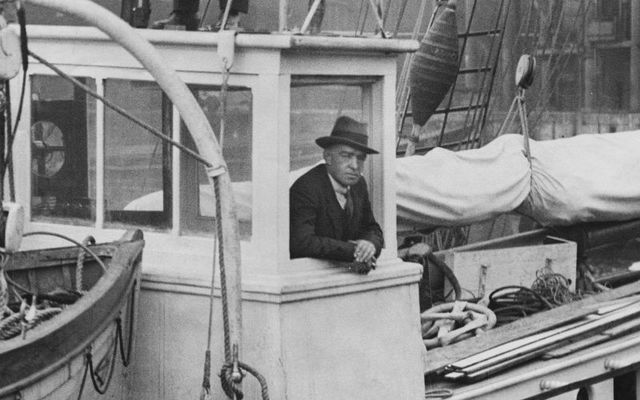The Shackleton Quest Expedition, led by the Royal Canadian Geographical Society (RCGS), has discovered the historic wreck of Quest, lying at a depth of 390m off the coast of Newfoundland and Labrador.
The schooner-rigged vessel served as Sir Ernest Shackleton’s last expedition ship on the Shackleton-Rowett expedition of 1921/2. He died on board on January 5, 1922, aged 47.
The discovery of the shipwreck, in the 150th year after Shackleton’s birth, took place on Sunday, June 9, five days into the expedition in the North West Atlantic using sonar equipment operated by experts from Memorial University’s Marine Institute, a leader in ocean research, RCGS said in a statement on June 12.
A very special thank you to @WeAreShackleton, our expedition partner, as well as @MemorialU, @marineinstitute, @FramMuseum and @ExplorersClub. pic.twitter.com/g9b5Ra0er4
— Royal Canadian Geographical Society (@RCGS_SGRC) June 12, 2024
Expedition Leader John Geiger headed an international team of experts, including Search Director, the world-renowned shipwreck hunter David Mearns.
Participants were drawn from Canada, the UK, Norway, and the US, and included oceanographers, historians, and divers.
“Finding Quest is one of the final chapters in the extraordinary story of Sir Ernest Shackleton,” said Expedition Leader John Geiger, CEO of the Royal Canadian Geographical Society.
“Shackleton was known for his courage and brilliance as a leader in crisis. The tragic irony is that his was the only death to take place on any of the ships under his direct command.”
Search Director David Mearns said the discovery was the result of painstaking work by the team which included Antoine Normandin as his assistant and lead researcher. They researched historic logs and maps, and cross-referenced the historical data with modern technology to determine where the ship may have been located based on currents, weather conditions, and other factors.
“I can definitively confirm that we have found the wreck of the Quest. She is intact," Mearns said.
"Data from high-resolution side scan sonar imagery corresponds exactly with the known dimensions and structural features of this special ship.
"It is also consistent with events at the time of the sinking."
Shackleton died aboard Quest in 1922 off the island of South Georgia in the South Atlantic, on his fourth journey to the Antarctic. Just seven years before, he had captured the attention of the world when he enabled the survival of all 27 members of his crew after their ship, the Endurance, was trapped and sunk by sea ice during the Imperial Trans-Antarctic Expedition.
The discovery of Quest represents the last major part of the jigsaw in assembling Shackleton’s physical legacy, RCGS noted. His granddaughter, and expedition co-patron, Hon. Alexandra Shackleton, said it was her “dream” to find Quest. Now, that dream has been realized fittingly in the year marking the 150th anniversary of Shackleton’s birth.
Joining Alexandra Shackleton as co-patron of the expedition was Traditional Chief Mi’sel Joe of the Miawpukek First Nation.
“Quest sank in the waters off of Mi’kmaq, Innu, and Inuit territories in 1962, while on a sealing expedition.
"I am so happy that Quest was found, but sad due to health reasons I couldn’t be on the ship when it was found,” said Chief Joe.
“I was happy to share local knowledge with the captain and crew of the search vessel ahead of time to find Quest and honoured that Miawpukek Horizon Marine assisted in planning the expedition.
"Thanks to all that participated in the search. Job well done. The words that come to mind are NEVER SAY NEVER.
"Having our presence and involvement in this expedition demonstrates the respect that RCGS has for our peoples and our territories.”
Shackleton pointed out: “My grandfather, Sir Ernest Shackleton, had purchased Quest with the intention of leading a Canadian Arctic expedition.
"It is perhaps fitting that the ship should have ended its storied service in Canadian waters.
"I have long hoped for this day and am grateful to those who made this incredible discovery.”
The expedition team included Jan Chojecki, grandson of John Quiller Rowett, the man who financed Shackleton’s final journey to the Antarctic.
Also on board was Norwegian Tore Topp, whose family owned Quest from 1923 to 1962.

Ernest Shackleton. (Public Domain)
Sunday's discovery marks the second time in two years that a shipwreck related to the famous explorer from Co Kildare has been discovered.
In March 2022, search teams discovered the wreck of the Endurance, which was crushed in pack ice in November 1915 during an expedition to complete the first land crossing of the Antarctic continent. The ship sunk more than 3,000 meters beneath the surface in the Wendell Sea off Antarctica.
Shackleton and his crew sailed in lifeboats to the uninhabited Elephant Island before Shackleton took five of his men on a perilous 800-mile voyage to reach the whaling station on Grytviken, South Georgia.
He returned to Elephant Island four months later, miraculously rescuing all members of his crew.
In a twist of fate, Shackleton died off Grytviken seven years later.




Comments